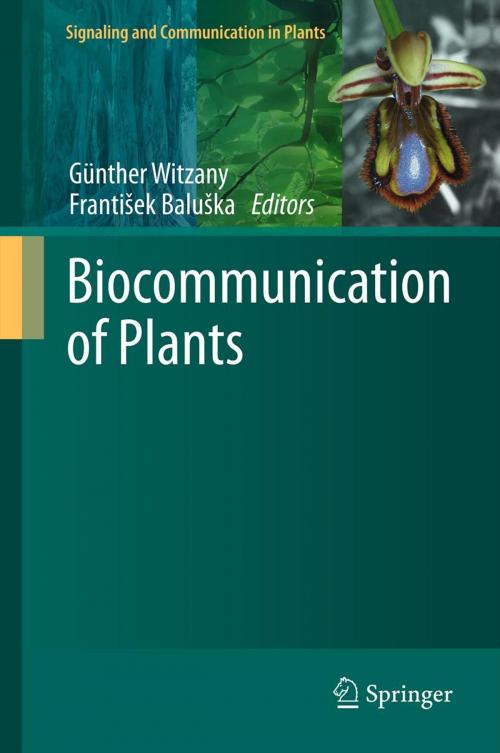Biocommunication of Plants
Nonfiction, Science & Nature, Science, Biological Sciences, Botany, Ecology| Author: | ISBN: | 9783642235245 | |
| Publisher: | Springer Berlin Heidelberg | Publication: | January 21, 2012 |
| Imprint: | Springer | Language: | English |
| Author: | |
| ISBN: | 9783642235245 |
| Publisher: | Springer Berlin Heidelberg |
| Publication: | January 21, 2012 |
| Imprint: | Springer |
| Language: | English |
Plants are sessile, highly sensitive organisms that actively compete for environmental resources both above and below the ground. They assess their surroundings, estimate how much energy they need for particular goals, and then realise the optimum variant. They take measures to control certain environmental resources. They perceive themselves and can distinguish between ‘self’ and ‘non-self’. They process and evaluate information and then modify their behaviour accordingly. These highly diverse competences are made possible by parallel sign(alling)-mediated communication processes within the plant body (intraorganismic), between the same, related and different species (interorganismic), and between plants and non-plant organisms (transorganismic). Intraorganismic communication involves sign-mediated interactions within cells (intracellular) and between cells (intercellular). This is crucial in coordinating growth and development, shape and dynamics. Such communication must function both on the local level and between widely separated plant parts. This allows plants to coordinate appropriate response behaviours in a differentiated manner, depending on their current developmental status and physiological influences. Lastly, this volume documents how plant ecosphere inhabitants communicate with each other to coordinate their behavioural patterns, as well as the role of viruses in these highly dynamic interactional networks.
Plants are sessile, highly sensitive organisms that actively compete for environmental resources both above and below the ground. They assess their surroundings, estimate how much energy they need for particular goals, and then realise the optimum variant. They take measures to control certain environmental resources. They perceive themselves and can distinguish between ‘self’ and ‘non-self’. They process and evaluate information and then modify their behaviour accordingly. These highly diverse competences are made possible by parallel sign(alling)-mediated communication processes within the plant body (intraorganismic), between the same, related and different species (interorganismic), and between plants and non-plant organisms (transorganismic). Intraorganismic communication involves sign-mediated interactions within cells (intracellular) and between cells (intercellular). This is crucial in coordinating growth and development, shape and dynamics. Such communication must function both on the local level and between widely separated plant parts. This allows plants to coordinate appropriate response behaviours in a differentiated manner, depending on their current developmental status and physiological influences. Lastly, this volume documents how plant ecosphere inhabitants communicate with each other to coordinate their behavioural patterns, as well as the role of viruses in these highly dynamic interactional networks.















